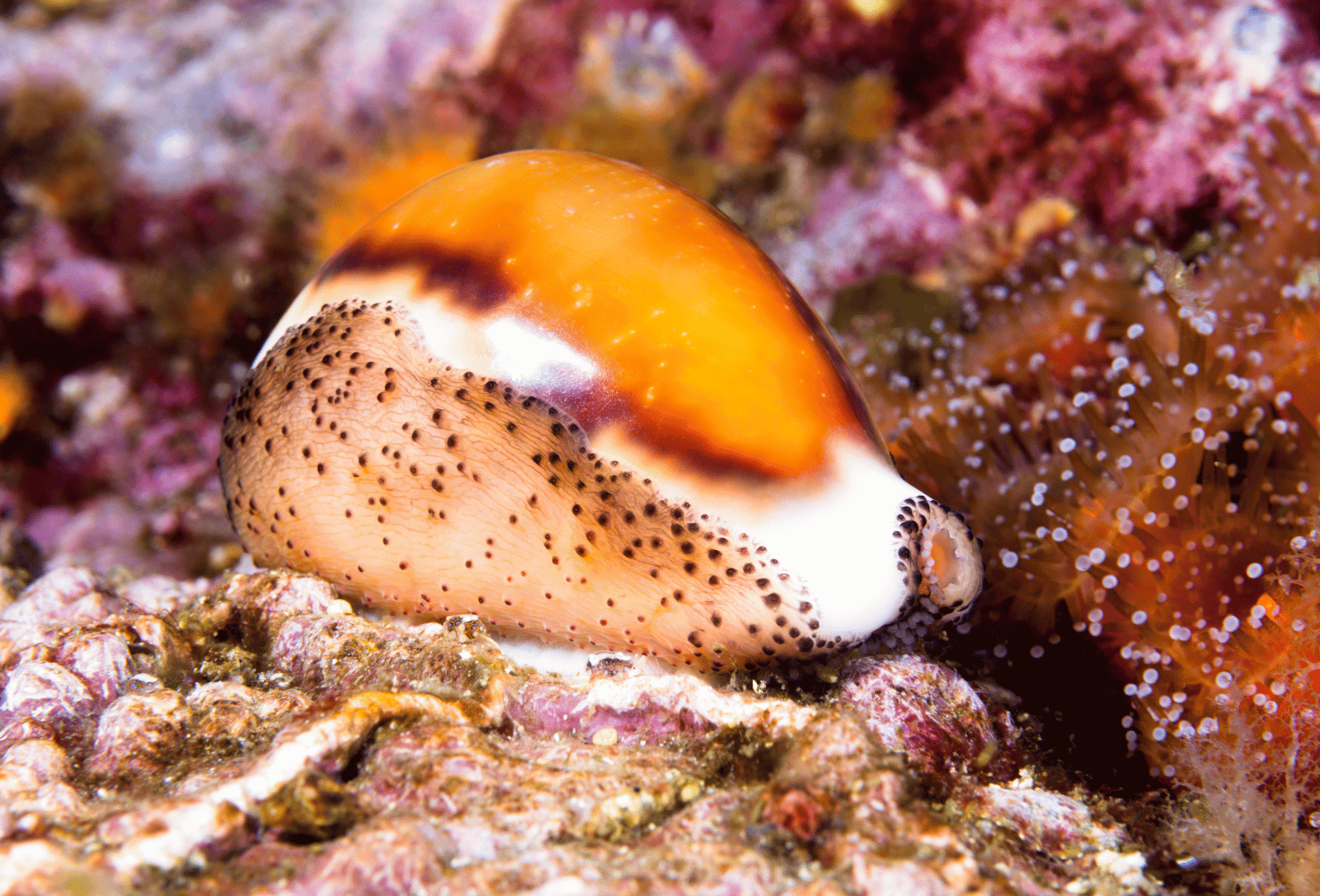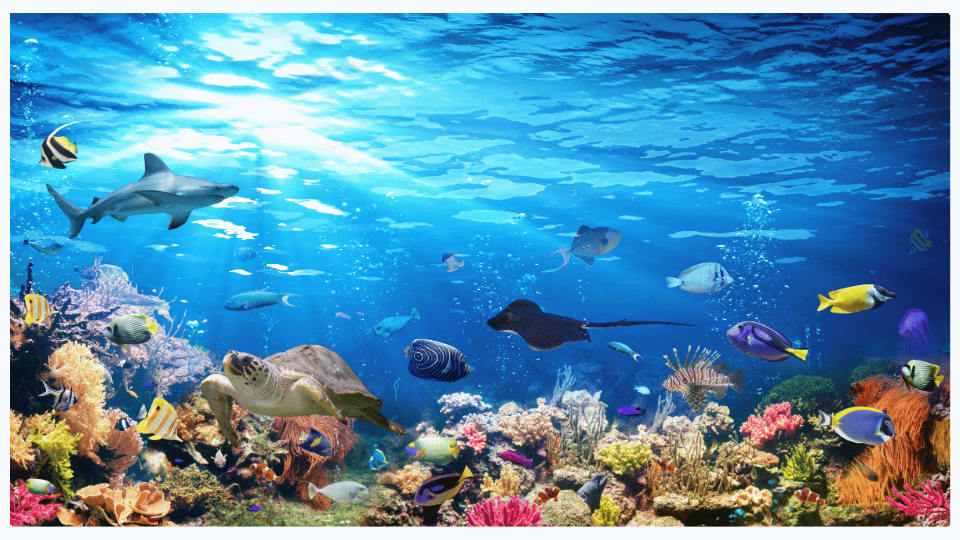Your cart is currently empty!

Collecting Cowrie Snail: A Hobbyist’s Guide
Few treasures in shell collecting are as captivating as cowrie snails. With their glossy, porcelain-like shells and vibrant patterns, these marine marvels have fascinated collectors for centuries. Whether you’re a seasoned shell enthusiast or a beginner just dipping your toes into this rewarding hobby, this guide will provide valuable insights into collecting cowrie snails.
We’ll explore everything from their unique characteristics to tips on how to care for and display your collection.
The Allure of Cowrie Snails
Cowrie snails are renowned for their stunning, smooth, and often vividly colored shells. They have been prized by collectors, traders, and even ancient civilizations, serving as currency and symbols of wealth. Understanding what makes cowrie snails unique is the first step in appreciating this fascinating hobby.
They belong to the family Cypraeidae and are characterized by their distinctive shiny and ovate shells. These shells are not only beautiful but also remarkably hard, making them durable and resistant to wear. Their vibrant patterns and colors range from deep browns and blacks to striking oranges and pinks.
One of the most intriguing aspects of cowrie snails is their habitat. They are found in warm, tropical waters around the world, often hiding in coral reefs, rocky crevices, and sandy bottoms. This diversity of habitats contributes to the variety of cowrie species and shell designs available to collectors.
The History of Cowrie Shell Collecting
Cowrie shells have a rich history that spans cultures and centuries. From ancient trade routes to modern collections, these shells have played significant roles in human history. Exploring this history can deepen your appreciation for cowrie shell collecting.
In ancient Africa and Asia, cowrie shells were used as currency. Their durability and beauty made them a reliable medium of exchange. The practice of using cowrie shells as money continued for centuries, reflecting their enduring value.
Beyond their economic significance, cowrie shells held cultural and spiritual importance. In many societies, they were used in rituals, art, and jewelry. Their association with fertility, protection, and prosperity added layers of meaning to these exquisite shells.
Modern cowrie shell collecting began to flourish in the 18th and 19th centuries when explorers and naturalists started documenting and cataloging marine life. Today, cowrie shell collecting is a popular hobby, with enthusiasts worldwide sharing their passion for these remarkable shells.
Identifying Different Cowrie Species
One of the joys of collecting cowrie snails is discovering the wide variety of species. Each species has unique characteristics, making identification an exciting challenge for collectors. Here are some key points to help you identify different cowrie species.
There are over 200 known cowrie species, each with its distinct shell pattern and color. Some of the most popular species among collectors include the Tiger Cowrie (Cypraea tigris), the Money Cowrie (Monetaria moneta), and the Arabian Cowrie (Cypraea arabica). Researching these species can provide valuable insights into their habitats and characteristics.
The size and shape of cowrie shells can vary significantly between species. Some shells are small and delicate, while others are large and robust. Observing these differences can help you identify the species you encounter.
Examining the shell’s surface is crucial in identifying cowrie species. Look for specific markings, color patterns, and textures. A magnifying glass can be a handy tool for this purpose, allowing you to appreciate the intricate details of each shell.
Collecting Techniques and Tips
Collecting cowrie snails requires patience, knowledge, and a keen eye. These techniques and tips will enhance your collecting experience, whether you’re exploring tide pools, snorkeling in coral reefs, or visiting local markets.
Start by researching the best locations for finding cowrie snails. Coastal areas with rocky shores, coral reefs, and sandy beaches are prime spots. Local guides and online forums can provide valuable information on specific locations.
When collecting in the wild, always prioritize safety and environmental responsibility. Wear appropriate gear, such as water shoes and gloves, to protect yourself from sharp rocks and potential hazards. Avoid disturbing marine life and habitats, and adhere to local regulations regarding shell collecting.
If you prefer a more relaxed approach, consider purchasing cowrie shells from reputable dealers and markets. Ensure that the shells are ethically sourced and not taken from protected areas. Building relationships with trusted sellers can lead to discovering rare and high-quality specimens.
Ethical Considerations in Shell Collecting
While the beauty of cowrie shells is undeniable, it’s essential to approach collecting with ethical considerations in mind. Responsible collecting practices ensure the preservation of marine ecosystems and the sustainability of this hobby.
Avoid collecting live cowrie snails whenever possible. Removing live animals from their natural habitats disrupts local ecosystems and can have long-term adverse effects. Instead, focus on collecting empty shells or purchasing them from ethical sources.
Support conservation efforts by staying informed about local and international regulations related to shell collecting. Some areas have restrictions or bans on collecting certain species to protect endangered populations. Respect these regulations to contribute to the preservation of marine biodiversity.
Promote awareness and education within the collecting community. Sharing knowledge about ethical practices and the importance of conservation can inspire others to adopt responsible collecting habits. Consider joining organizations or forums dedicated to sustainable shell collecting.
Cleaning and Preserving Your Collection
Properly cleaning and preserving your cowrie shells is essential to maintain their beauty and longevity. Here are some steps to ensure your collection remains in pristine condition.
Begin by rinsing newly collected shells with clean, fresh water to remove sand, debris, and any remaining organic material. For stubborn residue, a soft brush can gently scrub the surface. Avoid using harsh chemicals that could damage the shells.
After cleaning, allow the shells to air dry completely. This prevents moisture from causing mold or deterioration. Once dry, you can apply a thin layer of mineral oil or a specialized shell preservative to enhance the shell’s natural luster.
Store your collection in a cool, dry place away from direct sunlight. Displaying shells in glass cases or shadow boxes not only protects them from dust but also allows you to showcase their beauty. Regularly inspect your collection to ensure no signs of damage or deterioration.
Displaying Your Cowrie Shell Collection
Displaying your cowrie shell collection creatively enhances its visual appeal and allows you to share your passion with others. Here are some ideas to showcase your collection in style.
Shadow boxes are an excellent way to display cowrie shells. Arrange the shells on a felt or fabric background and secure them with adhesive putty or pins. Grouping shells by species, color, or size creates visually appealing compositions.
Consider creating themed displays based on specific regions or habitats. For example, you could design a tropical reef display featuring cowrie shells from Pacific islands. Adding natural elements like coral, sand, and driftwood can enhance the display’s authenticity.
Labeling your shells with detailed information adds educational value to your display. Include the shell’s species name, location of collection, and any interesting facts. This not only enriches your knowledge but also engages viewers with the story behind each shell.
The Role of Cowrie Shells in Art and Culture
Cowrie shells have left an indelible mark on art and culture throughout history. Understanding their significance in various cultures can deepen your appreciation for these beautiful shells and their impact on human creativity.
In African art, cowrie shells have been used in various forms of jewelry, clothing, and decorative objects. Their smooth, shiny surfaces symbolize beauty and wealth, while their association with fertility and protection adds meaning to artistic creations.
Cowrie shells have also played a significant role in Oceanic cultures. In places like Papua New Guinea and Fiji, they are used in traditional ceremonies, rituals, and dances. The shells’ vibrant colors and intricate patterns make them ideal for embellishing masks, costumes, and ceremonial items.
Contemporary artists continue to draw inspiration from cowrie shells, incorporating them into modern artworks and celebrating their aesthetic and cultural value. From sculptures to mixed media pieces, cowrie shells remain a versatile and evocative medium for artistic expression.
Setting Up the Aquarium
Creating a suitable environment for cowrie snails is crucial to their health and longevity. Here are some essential factors to consider when setting up an aquarium for cowrie snails:
Tank Size
- Minimum Tank Size: Cowrie snails require a tank of at least 20 gallons. Larger tanks provide more stability in water conditions and more space for the snails to explore.
Water Parameters
Maintaining stable water conditions is key to keeping cowrie snails healthy.
- Temperature: Cowrie snails thrive in temperatures between 75°F and 82°F (24°C to 28°C).
- pH Level: A pH range of 8.1 to 8.4 is ideal, as it mimics their natural habitat.
- Salinity: Maintain a specific gravity of 1.023 to 1.025 to ensure proper salinity levels.
- Water Quality: Regularly check ammonia, nitrite, and nitrate levels. Cowries are sensitive to poor water quality, so a sound filtration system and regular water changes are necessary.
Substrate and Decor
- Substrate: Use a sandy substrate or fine gravel that mimics the natural environment of cowrie snails. Avoid sharp substrates that can damage their delicate feet.
- Decor: Provide plenty of hiding spots using live rock, coral, and caves. Cowrie snails enjoy exploring and hiding, so creating a complex environment will keep them active and stress-free.
Lighting
- Lighting: Moderate lighting is sufficient for cowrie snails, as they are primarily nocturnal. To mimic their natural behavior, ensure that the tank receives a natural day-night cycle.
Feeding Cowrie Snails
Cowrie snails are herbivores, primarily grazing on algae. However, in an aquarium setting, supplemental feeding is necessary to ensure they receive adequate nutrition.
Diet
- Algae: Cowrie snails will naturally graze on algae growing in the tank. Encouraging algae growth on rocks and glass can provide a steady food source.
- Vegetable Matter: Supplement their diet with blanched vegetables like spinach, lettuce, and zucchini.
- Commercial Foods: Provide commercial foods designed for herbivorous snails and marine invertebrates, such as algae wafers and spirulina pellets.
Feeding Frequency
Feed cowrie snails a small amount of food every 2-3 days. Monitor their consumption and adjust the feeding schedule to prevent overfeeding and water quality issues.

Tank Mates for Cowrie Snails
Selecting compatible tank mates is crucial to prevent stress and ensure the well-being of cowrie snails. Here are some suitable and unsuitable tank mates:
Suitable Tank Mates
- Peaceful Fish: Small, non-aggressive fish such as gobies, blennies, and clownfish are good choices.
- Invertebrates: Other peaceful invertebrates, like cleaner shrimp, hermit crabs, and sea stars, can coexist with cowrie snails.
Unsuitable Tank Mates
- Predatory Fish: Avoid housing cowrie snails with predatory fish such as triggers, puffers, and large wrasses, as they may view the snails as food.
- Aggressive Invertebrates: Avoid aggressive crabs and other invertebrates that may harm or harass the snails.
Wrapping Up
Cowrie snails, with their glossy shells and vibrant patterns, are a captivating addition to any collection or aquarium. Whether you’re a seasoned collector or just starting, these snails offer a fascinating glimpse into nature’s beauty. By understanding their care requirements and practicing ethical collecting, you can enjoy these marine marvels while contributing to their conservation.
To witness these beautiful creatures up close, visit Boca Aquarium by Diamonds by Raymond Lee, where you can experience the enchanting world of cowrie snails and learn more about ocean conservation. Embracing cowrie snails as a hobby enriches your appreciation for the ocean’s intricate beauty.
